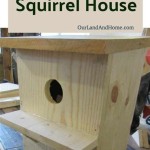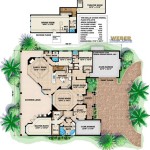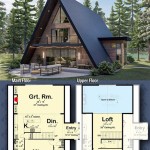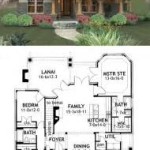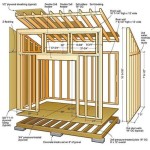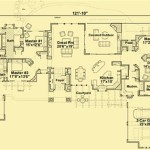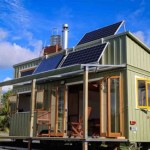Design Your Dream Home House Plan With Mother In Law Suites in Texas
The demand for multi-generational living spaces is on the rise, particularly in Texas, driving an increased interest in house plans that incorporate mother-in-law suites. These suites, also known as accessory dwelling units (ADUs) or granny flats, offer a self-contained living area within a larger residence, catering to the needs of aging parents, adult children, or other family members. Designing a house plan with a mother-in-law suite requires careful consideration of space, functionality, privacy, and compliance with local building codes.
Creating a functional and aesthetically pleasing home with a mother-in-law suite involves a multifaceted approach, encompassing aspects like zoning regulations, accessibility standards, and the specific needs of the intended occupants. The primary objective is to seamlessly integrate the suite into the overall design while maintaining a degree of independence for both the main household and the suite residents. This independence fosters a harmonious living environment, providing both proximity and privacy.
In Texas, building codes and zoning regulations can vary significantly from city to city and even between different neighborhoods within the same city. Therefore, a thorough understanding of the local requirements is paramount before commencing any design or construction work. Factors such as minimum lot size, setback requirements, parking stipulations, and limitations on the size and location of ADUs must be taken into account to ensure compliance and avoid potential legal issues.
Understanding Zoning Regulations for Mother-in-Law Suites in Texas
Navigating the zoning regulations for mother-in-law suites in Texas requires diligent research and communication with local authorities. Zoning ordinances dictate the permissible uses of land and the types of structures that can be built on a given property. These ordinances often address the size, location, and occupancy of accessory dwelling units. Some municipalities may have specific restrictions on the square footage of ADUs, limiting them to a certain percentage of the main house's area. Others might impose restrictions on the number of occupants allowed in the suite. Parking requirements are another crucial consideration, as some cities mandate that ADUs have dedicated parking spaces to avoid overburdening street parking.
Furthermore, it is essential to understand whether the municipality allows ADUs to be rented out to individuals outside of the immediate family. Some cities permit rentals, while others restrict occupancy to family members only. Violating these regulations can result in fines, legal action, and even the forced removal of the unauthorized unit. To ensure compliance, it is advisable to consult with a local zoning official or a real estate attorney who specializes in zoning matters. Obtaining written confirmation from the city regarding the permissibility of the proposed ADU is highly recommended.
In addition to general zoning regulations, homeowners should also be aware of any neighborhood-specific restrictions imposed by homeowners' associations (HOAs). HOAs often have their own rules and covenants that may further limit the construction or use of ADUs. These restrictions can be more stringent than city regulations, and homeowners are legally bound to adhere to them. Failure to comply with HOA rules can lead to fines, legal disputes, and even forced compliance. Therefore, thoroughly reviewing the HOA covenants and obtaining approval from the HOA board before proceeding with the project is crucial.
Designing for Accessibility and Aging in Place
When designing a mother-in-law suite, accessibility should be a primary concern, particularly if the suite is intended for an elderly or mobility-impaired individual. Incorporating universal design principles can significantly enhance the comfort and safety of the space, allowing residents to age in place with dignity and independence. Universal design focuses on creating environments that are usable by people of all ages and abilities, without the need for specialized adaptations. This approach benefits not only elderly residents but also anyone with temporary or permanent disabilities.
Key accessibility features to consider include wider doorways and hallways to accommodate wheelchairs or walkers, grab bars in bathrooms, and roll-in showers without curbs. Lever-handled door knobs and faucets are easier to operate than traditional round knobs, and rocker-style light switches are more accessible than toggle switches. Non-slip flooring materials can help prevent falls, and adjustable-height countertops and sinks can accommodate users of different heights. Adequate lighting is also crucial, as poor lighting can increase the risk of accidents and make it difficult to navigate the space. Incorporating natural light through large windows or skylights can enhance visibility and create a more cheerful atmosphere.
In addition to physical accessibility, it's important to consider the layout and flow of the suite. A well-designed suite should have a clear and intuitive layout, with easy access to all essential areas, such as the kitchen, bathroom, and bedroom. Minimizing clutter and providing ample storage space can also improve accessibility and make the suite more user-friendly. Consider incorporating smart home technology, such as voice-activated lighting and temperature control systems, to further enhance the convenience and independence of the resident.
Integrating Privacy and Independent Living
One of the key considerations when designing a mother-in-law suite is ensuring privacy and promoting independent living for both the suite residents and the main household. This requires careful planning of the suite's layout, entrance, and utilities. A separate entrance is essential for maintaining privacy and allowing suite residents to come and go without disturbing the main household. This entrance should be well-lit and easily accessible, ideally with a covered porch or awning to provide protection from the elements.
Soundproofing measures can also significantly enhance privacy by minimizing noise transmission between the suite and the main house. This can be achieved by using sound-dampening insulation in walls and ceilings, installing solid-core doors, and sealing any gaps or cracks around windows and doors. Strategically placing the suite away from high-traffic areas of the main house, such as the living room or kitchen, can also help reduce noise levels. Consider the orientation of the suite to maximize natural light and views while minimizing direct visibility from the main house.
Independent utilities, such as a separate heating and cooling system, electrical panel, and water heater, can provide suite residents with greater control over their living environment and reduce reliance on the main household. Separate metering for utilities can also simplify billing and ensure fair distribution of costs. A small kitchenette with a refrigerator, microwave, and sink allows suite residents to prepare their own meals and snacks, further promoting independence. Consider incorporating a private outdoor space, such as a patio or balcony, to provide suite residents with a place to relax and enjoy the outdoors.
The design of a house plan with a mother-in-law suite in Texas requires more than just adding an extra room. It is about creating a harmonious and functional living arrangement that respects the needs and preferences of all occupants while adhering to local regulations and design principles. Thoughtful planning and attention to detail will result in a space that enhances the quality of life for everyone involved.
Ultimately, the success of a mother-in-law suite design hinges on clear communication and collaboration between the homeowner, the architect or designer, and the intended occupants of the suite. Understanding their specific needs, preferences, and expectations is essential for creating a space that truly meets their requirements and promotes a positive living experience.
By carefully considering these factors, homeowners in Texas can design a dream home that seamlessly integrates a mother-in-law suite, providing a comfortable, private, and accessible living space for family members while enhancing the overall value and functionality of the property. Proper planning and execution are key to creating a successful multi-generational living environment.

In Law Suite Plans Give Mom Space And Keep Yours The House Designers

House Plans With A Mother In Law Suite The Designers

Designing And Building New Homes With Mother In Law Suites David Weekley

One Story With In Law Suite Plan 2286

Barndominium With In Law Suite Plans Blog Eplans Com

Designing A Main House And Attached Mother In Law Suite

House Plans With In Law Suites Attached Guest Houses The Designers

House Plans With A Mother In Law Suite The Designers

Barndominium With In Law Suite Plans Blog Eplans Com

House Plans With Mother In Law Suite
Related Posts

